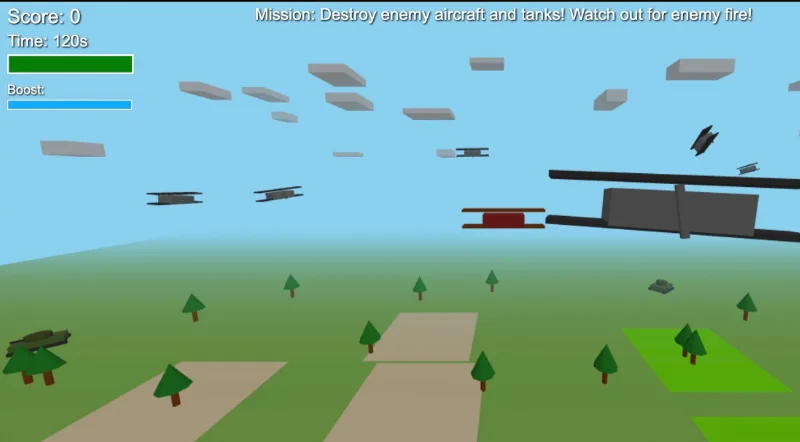Is vibe coding the future?
Imagine sitting down with a cup of coffee, dreaming up a new app, and instead of spending weeks learning to code, you just tell your computer what you want it to do. That’s the magic of vibe coding, a term that burst onto the tech scene in February 2025, thanks to computer scientist Andrej Karpathy. He described it as letting go of the nitty-gritty details, embracing the creative flow, and letting AI tools like Cursor and Claude handle the coding heavy lifting. It’s like having a super-smart buddy who turns your ideas into reality with just a few words. This approach is thrilling because it makes app creation accessible to everyone, from seasoned developers to complete beginners. But here at WHY, we’ve taken a closer look, and while vibe coding is full of promise, we’re not convinced it’s the future of coding. Let’s dive into what makes it so exciting, where it shines, and why we think traditional coding skills are still the real MVP.

Let's talk money.
Let’s talk about someone who allegedly turned vibe coding into a goldmine: Pieter Levels, a indie developer, claims he has a knack for spinning up startups and apps faster than you can say “launch". In February 2025, he decided to have some fun with vibe coding. Sitting at his laptop, he fired up Cursor and typed, “Make a 3D flying game in browser with skyscrapers.” Thirty minutes later—yes, you read that right—he had a working flight simulator called fly.pieter.com. “Today I thought what if I ask Cursor to build a flight simulator,” he shared on X, “and after many questions and comments from me, I now have the official [ ✈️ Pieter .com Flight Simulator ] in vanilla HTML and JS.” The game, set in a beach town with a runway, cliffs, and a beach, was simple but captivating.

Pieter didn’t just stop at a prototype. He kept tweaking it, adding collision detection and multiplayer features, all with AI’s help. But here’s where his story really takes off: Pieter has over 600,000 followers on X, and when he shared his game, they flocked to play it. The game is free, but Pieter cleverly monetized it with in-game ads, like $5,000 Blimp ads, raking in around $52,000 a month. Some reports even claim it hit $1 million in annual recurring revenue in just 17 days, though we’ll stick with the more consistent $52,000 monthly figure. His secret? A mix of AI speed, his coding know-how to guide the AI, and a massive audience ready to amplify his work.
Pieter’s success lit a fire under the vibe coding community. He organized the 2025 Vibe Coding Game Jam, inviting developers to create AI-assisted games. Over 1,000 people joined, submitting everything from taxi simulators to air traffic control games. Winners walked away with prizes up to $10,000, like “The Great Taxi Assignment,” a GTA-inspired game that stole the show. But it’s not just big names like Pieter. Smaller creators, like Nicola with his game “Vibe Sail,” showed that even with fewer than 2,000 followers, you can ride the vibe coding wave to success by tapping into the trend. These stories make you wonder: is vibe coding the way to make easy money? It’s tempting to think so, but Pieter’s coding background and marketing savvy were just as crucial as the AI.
Tools That Make Vibe Coding Possible
Vibe coding wouldn’t exist without some seriously cool AI tools that turn your words into code. Let’s meet the stars of the show. First, there’s Cursor, a code editor that’s like Visual Studio Code on steroids. It can whip up code from scratch, rewrite messy bits to make them better, and even answer questions about your project. Developers rave about it, saying it’s twice as fast as tools like GitHub Copilot. Its agent mode is a standout, letting you hand over entire tasks—like building a game’s multiplayer system—and it just gets it done. It’s no wonder vibe coders love it.
Then there’s Claude, created by Anthropic. Claude’s latest versions, Opus 4 and Sonnet 4, are coding powerhouses. They can generate code, debug tricky bugs, and analyze your codebase like a pro. There’s also Claude Code, a command-line tool that lets you run terminal commands and manage complex projects. Developers say it’s a beast at refactoring, turning clunky code into something sleek and efficient. Other tools, like GitHub Copilot, Mistral Code, and ACI Dev, are also in the mix, with Mistral Code working across different coding environments and ACI Dev speeding up app launches.
These tools are like having a team of coding assistants at your beck and call. They handle the boring stuff, like writing repetitive code or fixing small errors, so you can focus on the fun parts—like designing your app’s look or dreaming up new features. But here’s the thing: while they’re powerful, they’re not perfect. You still need to keep an eye on the code to make sure it’s secure and won’t fall apart later. It’s like using a fancy kitchen gadget—you can make a great meal, but you still need to taste the food to make sure it’s right.
Our Journey with Vibe Coding at WHY
Here at WHY, we’re all about crafting code that’s clear, reliable, and easy for anyone to understand, especially since our app is open-source. When vibe coding started making headlines, we couldn’t resist giving it a try. We fired up Cursor for some personal projects, eager to see if it could live up to the hype. And honestly, it was pretty impressive. Cursor spat out code faster than we could type, and its suggestions were usually spot-on. But as we dug deeper, we noticed something: the AI’s code wasn’t always as clean or structured as we like. It worked, sure, but it felt like a puzzle that was hard for our team to piece together later.
So, we made a choice. For our main app, we’re sticking with good old-fashioned coding. It’s slower, but it gives us code we can trust and share with our community. That doesn’t mean we’re anti-AI! We love using tools like Claude and GPT to write documentation or brainstorm ideas. They’re like trusty sidekicks, helping us explain our code or come up with new features without messing with the actual coding process. For us, it’s about balance: using AI where it shines but keeping human expertise at the core of what we do.
Can You Make Money as a Vibe Coder?
Pieter Levels’ $52,000-a-month flight simulator has everyone asking, "Is it real? How to make money as a vibe coder?” It’s a fair question: his story makes it look like a shortcut to riches. But let’s break it down. Pieter’s success wasn’t just about vibe coding; it was about combining AI’s speed with his coding skills and a massive audience. We can't say for sure if his success is real, but we can look at it as a crazy example of... it may be possible.
If you’re dreaming of vibe coding riches, here’s a game plan. Start by using vibe coding to build a quick prototype: something simple but fun, like a game or a niche app. Share it on platforms like X or Reddit to see if people bite. If it gains traction, invest time in learning basic coding to polish the AI’s work, making it more secure and user-friendly. Finally, market it like crazy: build a following, share updates, and maybe add monetization like ads or subscriptions. It’s not easy money, but with persistence, it’s possible.
The catch? Success stories like Pieter’s are rare, and mostly fake. Many vibe-coded projects fizzle out because they’re hard to maintain or don’t stand out. Plus, if you don’t understand the code, you’re at the mercy of the AI when things break. Vibe coding can get you started, but to keep the money flowing, you’ll need more than just vibes.
The Downsides of Vibe Coding
As much as we love the idea of vibe coding, it’s not all sunshine and rainbows. One big worry is security. A Stanford study found that developers using AI tools wrote less secure code in 80% of cases, introducing risks like SQL injections or other vulnerabilities. That’s a big deal if your app handles user data. Another issue is code quality. AI might get you 75% of the way there, but the last 25% (fixing bugs, optimizing performance) can be a nightmare if the code’s a mess. As one developer put it on X, vibe coding is great for “Day 0” but tough for “Day 1” maintenance.
There’s also the risk of losing your coding chops. If you lean too hard on AI, you might stop learning how to code properly, which could hurt you in the long run. And let’s not forget that AI doesn’t always “get” complex projects. It might churn out code that works but misses the mark on your specific needs. These challenges don’t mean vibe coding is bad—it’s just a tool with limits. Knowing those limits is key to using it wisely.
Why We Believe in Traditional Coding
At WHY, we’re big believers in the power of coding by hand. It’s not just about writing code; it’s about understanding every line, making sure it’s secure, and building something that lasts. When you know how to code, you can spot problems in AI-generated code, optimize it for speed, and debug issues like a pro. It’s like being a chef who knows every ingredient in a dish: you can tweak it to perfection.
Even Pieter Levels himself said that “being able to read and understand the code” is a must, even with vibe coding. That’s why we chose not to use AI autocomplete for our app. We want code that’s clear, collaborative, and ready for our open-source community to dive into. Sure, it takes longer, but it’s worth it for an app that users can trust. AI is a great helper, but for us, human expertise is the real star.
Is Vibe Coding the Future?
So, is vibe coding the future of development? It’s tempting to say yes when you hear success stories or see the flood of games from the Vibe Coding Game Jam. It’s fast, it’s fun, and it’s opening doors for people who never thought they could build an app. On X, developers like @hasantoxr are hyped about tools like ACI Dev, saying they let you “launch apps 10X faster.” But we’re not so sure it’s the whole future.
Vibe coding feels like a shiny new toy: exciting now, but it might lose its luster. The risks of sloppy code, security issues, and skill fade are real. Falling into the “vibe coding trap” led to quick results but slower progress and burnout. Plus, the tech world moves fast. Today’s hot trend could be tomorrow’s forgotten fad.
For us at WHY, the future is about balance. Vibe coding is a fantastic tool for prototyping or sparking creativity, but it’s not a replacement for knowing how to code. Skilled coders can use AI to boost their work while building apps that are secure, efficient, and built to last. So, while we’re cheering for vibe coding’s potential, we’re betting on human expertise to shape the future of software. After all, it’s the coders who understand the craft who’ll keep pushing the boundaries, no matter what tools come next.